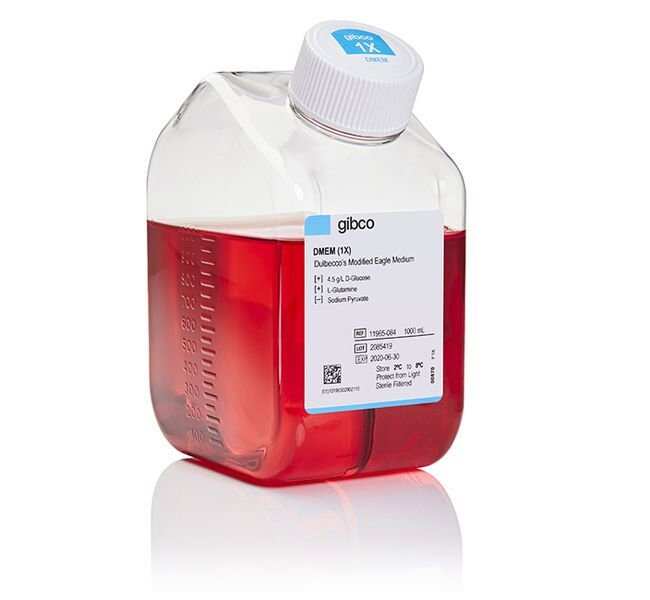规格
内容与储存
运输条件:环境
有效期:自生产之日起12个月
Dulbecco's Modified Eagle Medium (DMEM) is a widely used basal medium for supporting the growth of many different mammalian cells. Cells successfully cultured in DMEM include primary fibroblasts, neurons, glial cells, HUVECs, and smooth muscle cells, as well as cell lines such as HeLa, 293, Cos-7, and PC-12. Life Technologies offers a variety of Gibco® DMEM modifications for a range of cell culture applications. Find the right formulation using themedia selector tool.
This DMEM is modified as follows:
| With | Without |
| • High Glucose | • Sodium Pyruvate |
| • L-glutamine | • HEPES |
| • Phenol Red |
The complete formulation is available.
DMEM is unique from other media as it contains 4 times the concentration of amino acids and vitamins than the original Eagle's Minimal Essential Medium. DMEM was originally formulated with low glucose (1 g/L) and sodium pyruvate, but is often used with higher glucose levels, with or without sodium pyruvate.
Product Use
For human ex vivo tissue and cell culture processing applications. CAUTION: When used as a medical device, Federal law restricts this device to sale by or on the order of a physician. Customers using Gibco® DMEM in a manufacturing process, who have a submission with the FDA, may request a letter of authorization from Life Technologies to reference our Type II Drug Master File (DMF).
cGMP Manufacturing and Quality System
Gibco® DMEM is manufactured at a cGMP compliant facility, located in Grand Island, New York. The facility is registered with the FDA as a medical device manufacturer and is certified to ISO 13485 and ISO 9001 standards. For supply chain continuity, Life Technologies offers an identical Gibco® DMEM product made in our Scotland facility (41965-062). This facility is registered with the FDA as a medical device manufacturer and is certified to the ISO 13485 standard.
DMEM contains no proteins, lipids, or growth factors. Therefore, DMEM requires supplementation, commonly with 10% Fetal Bovine Serum (FBS). DMEM uses a sodium bicarbonate buffer system (3.7 g/L) and therefore requires a 5-10% CO2 environment to maintain physiological pH.
 会员登录
会员登录.getTime()%>)
 购物车()
购物车()


 成功收藏产品
成功收藏产品